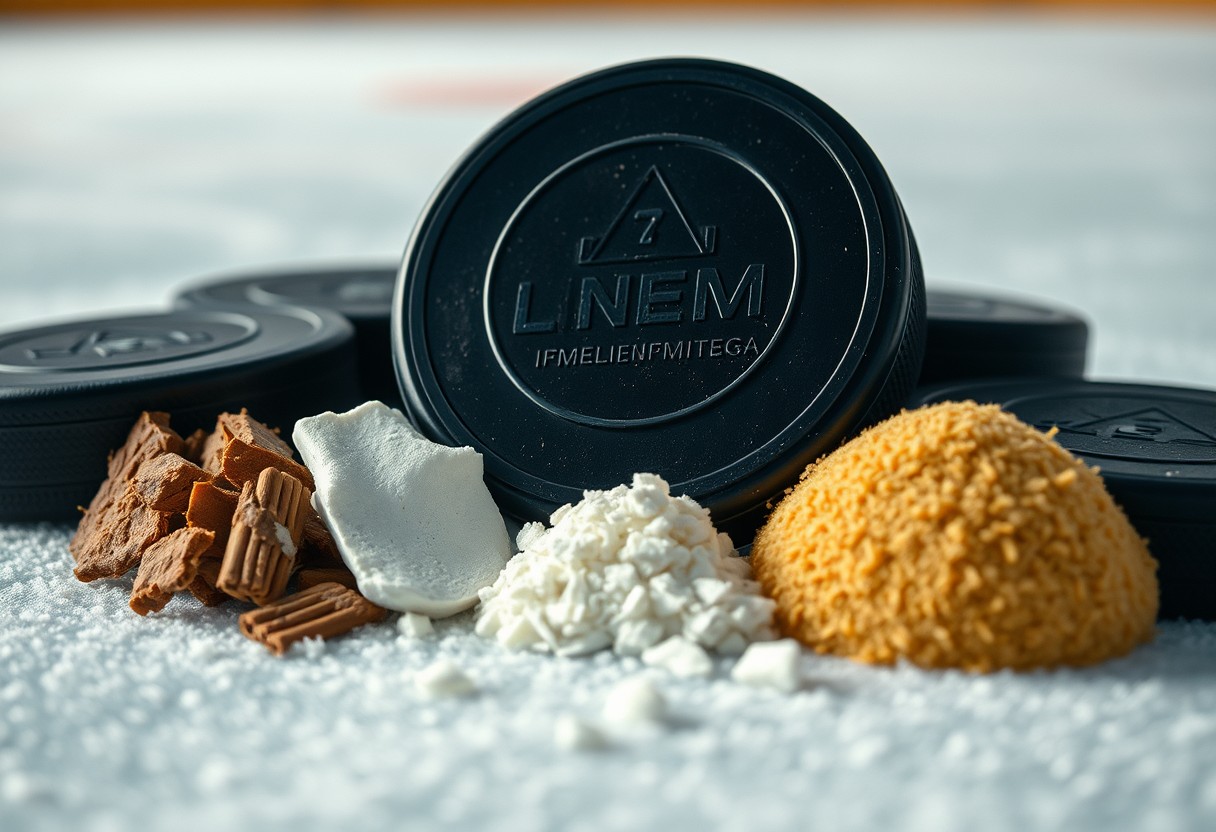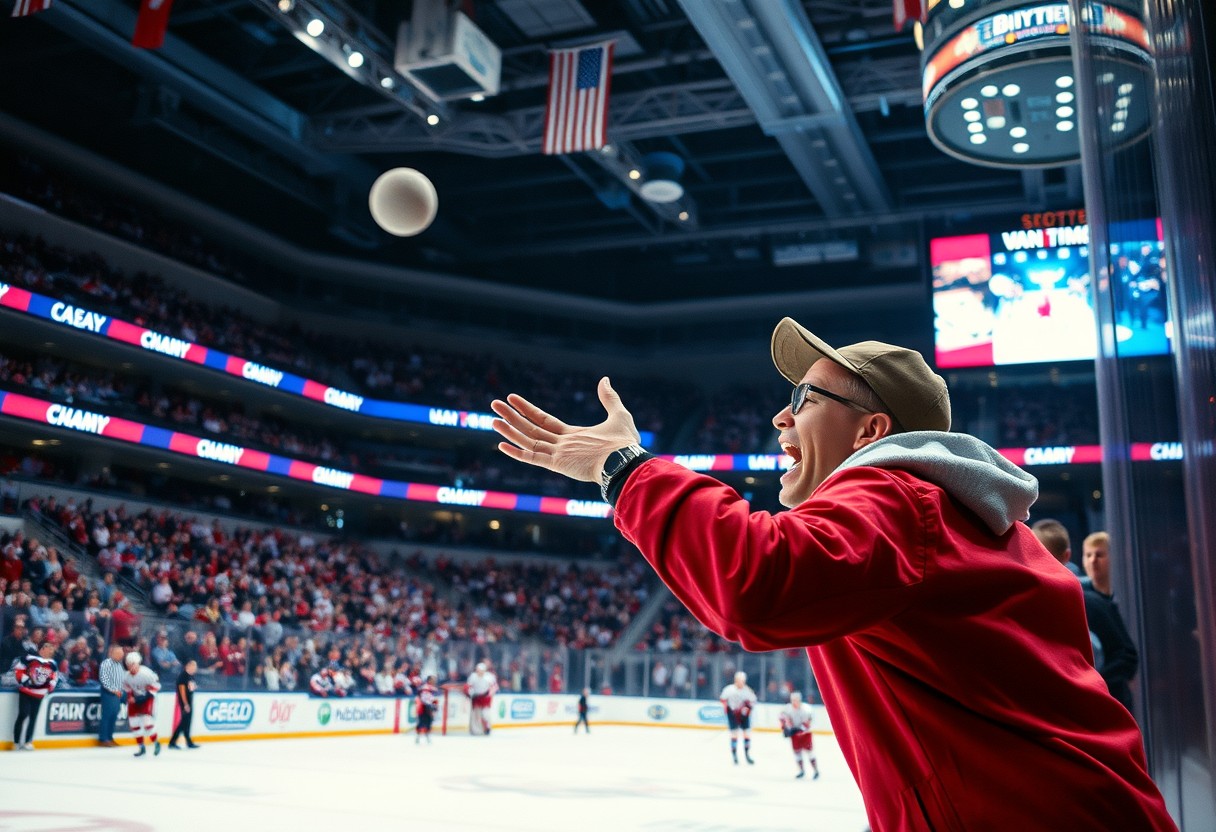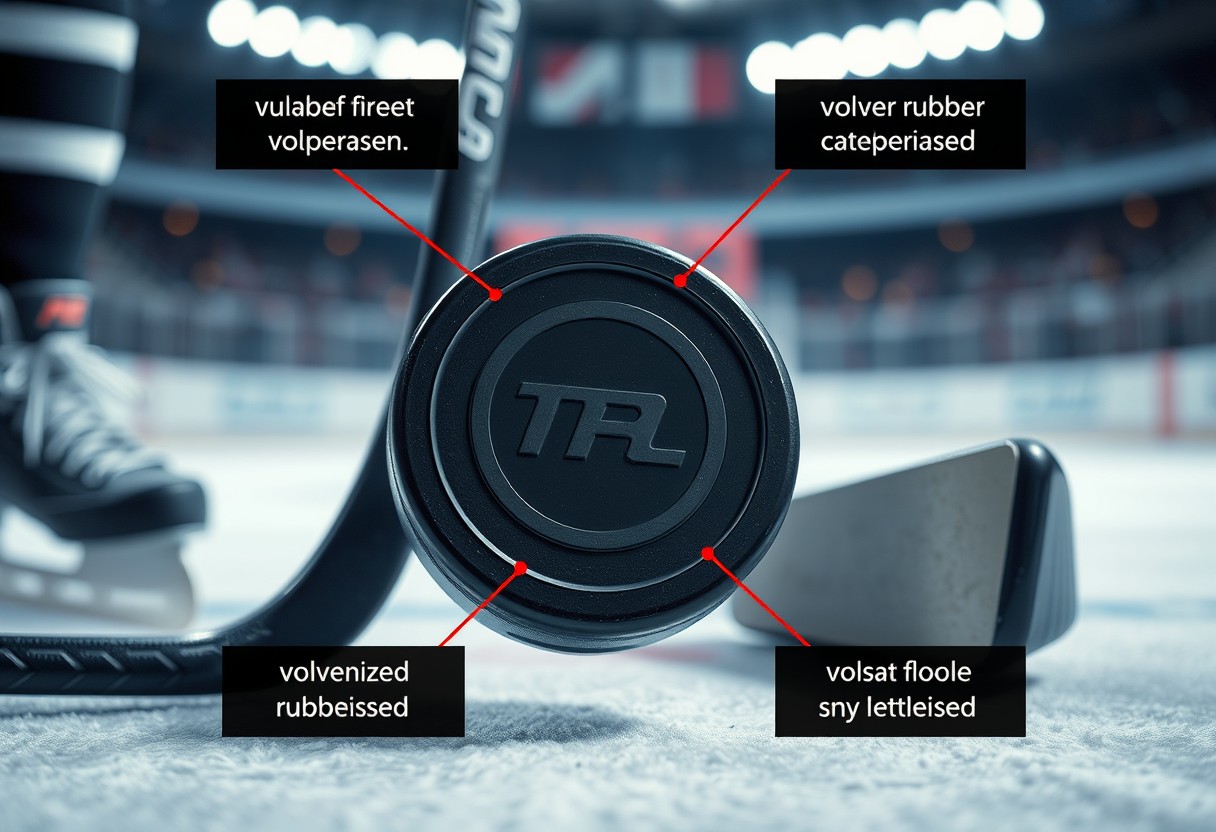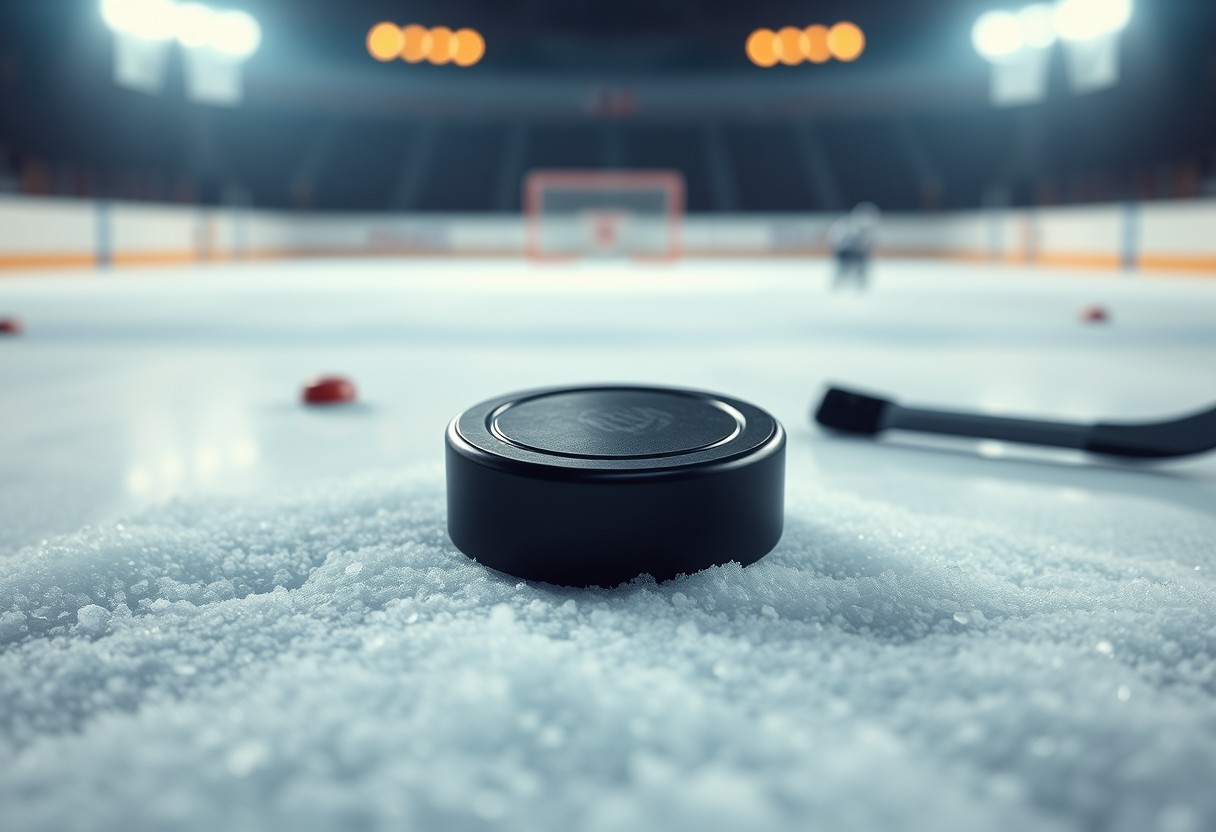It’s necessary to understand the materials behind the game you love, especially when it comes to hockey pucks. You might be surprised to learn that these small, cylindrical objects, which seem simple at first glance, are crafted with care to ensure optimal performance on the ice. In this post, you’ll discover what makes up a hockey puck, including the materials used in its construction and how these components affect your game. Whether you’re a player, coach, or enthusiast, knowing the science behind hockey pucks can enhance your appreciation of the sport.
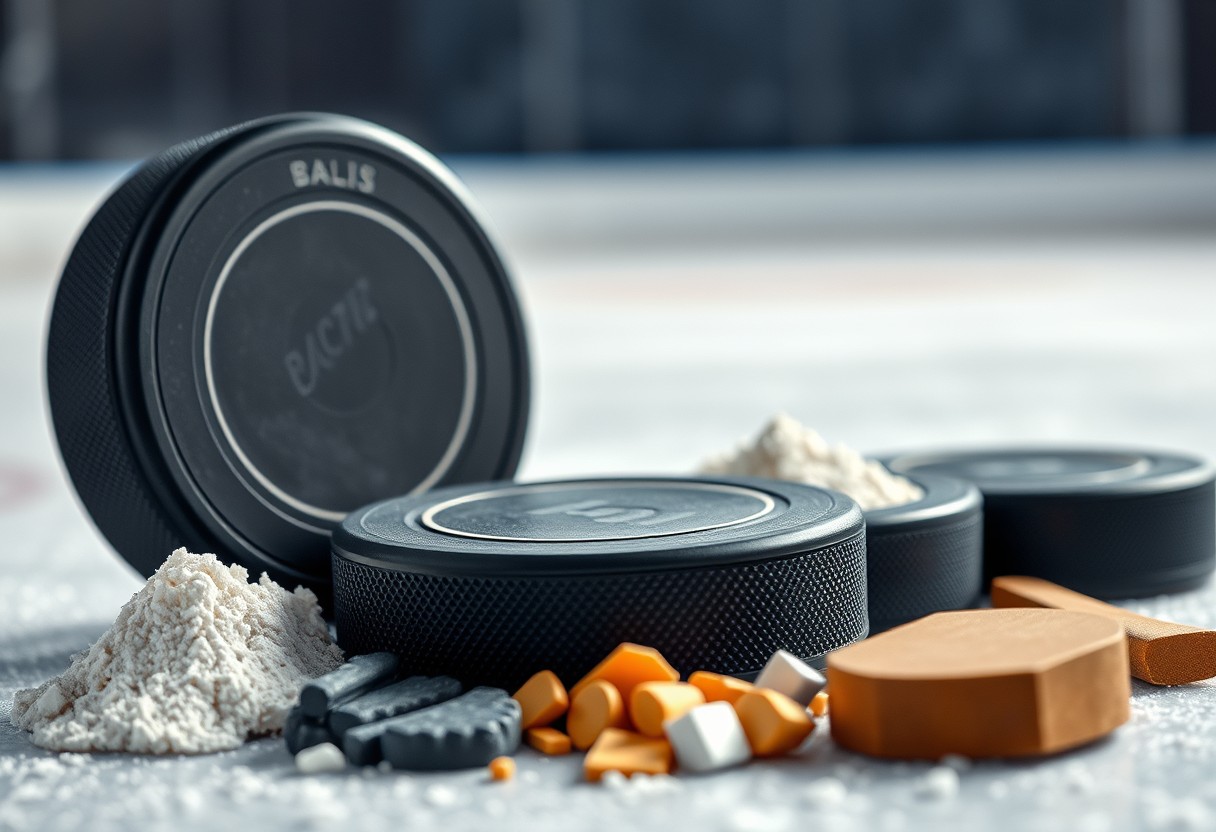
Key Takeaways:
- Material Composition: Hockey pucks are primarily made of vulcanized rubber, which gives them durability and the ability to withstand high-impact gameplay.
- Weight and Size: Standard pucks are designed to weigh 6 ounces (approximately 170 grams) and have a diameter of 3 inches (about 7.62 cm), ensuring consistent performance across different rinks.
- Temperature Effects: The performance of hockey pucks can be influenced by temperature; colder conditions can make the rubber more rigid, affecting the puck’s bounce and glide on the ice.
Composition of Hockey Pucks
A hockey puck’s composition plays a crucial role in its performance during gameplay. The standard puck is made primarily of vulcanized rubber, which offers the necessary durability, resilience, and weight for optimal play. Understanding the makeup of these pucks helps you appreciate their performance on the ice.
Materials Used
An imperative aspect of hockey pucks is the materials used in their construction. Typically, they are crafted from vulcanized rubber, a substance that combines natural rubber with sulfur to enhance its strength and elasticity. This ensures that the puck can withstand the extreme cold of the rink while maintaining its integrity during intense play.
Rubber vs. Alternative Materials
Used primarily for professional play, rubber pucks provide the best balance between weight, bounce, and durability. However, there are alternative materials that some leagues and casual players might consider, including plastic or foam, which can offer benefits in specific situations.
With the growing popularity of the sport, alternative materials are gaining traction for youth leagues and training purposes. Plastic pucks, for instance, are often used in non-ice environments due to their lightweight nature and lower risk of injury. While these alternatives can serve useful roles, they lack the authenticity and performance characteristics of professional-grade rubber pucks. Therefore, you should weigh the intended use of the puck when choosing the right material for your needs.
Manufacturing Process
Assuming you are curious about how hockey pucks are made, the manufacturing process is quite intricate and requires precision. It predominantly involves selecting the right materials, such as rubber or polyurethane, and transforming them into the solid, cylindrical form you see on the ice. This involves a series of steps that ensure each puck meets the rigor of competitive play.
Molding Techniques
Manufacturing hockey pucks primarily involves specific molding techniques, such as compression molding and injection molding. In compression molding, heated rubber is placed in a mold and pressure is applied, allowing the puck to take shape. Alternatively, injection molding forces molten material into a mold, which can result in more consistent shapes and better surface finishes. Both methods ensure that the pucks achieve their desired density and durability.
Quality Control Measures
An necessary part of the manufacturing process is quality control measures, which help maintain the high standards hockey pucks must meet for performance and safety. Regular checks throughout production ensure that material density, weight, and dimensions are consistent with hockey regulations.
For instance, manufacturers test pucks for weight and hardness to ensure compliance with governing bodies like the NHL. They also conduct bounce tests to measure how well a puck behaves on the ice, allowing for adjustments in the production process if necessary. By implementing these rigorous checks, you can trust that the pucks used in games deliver the performance expected in competitive play.
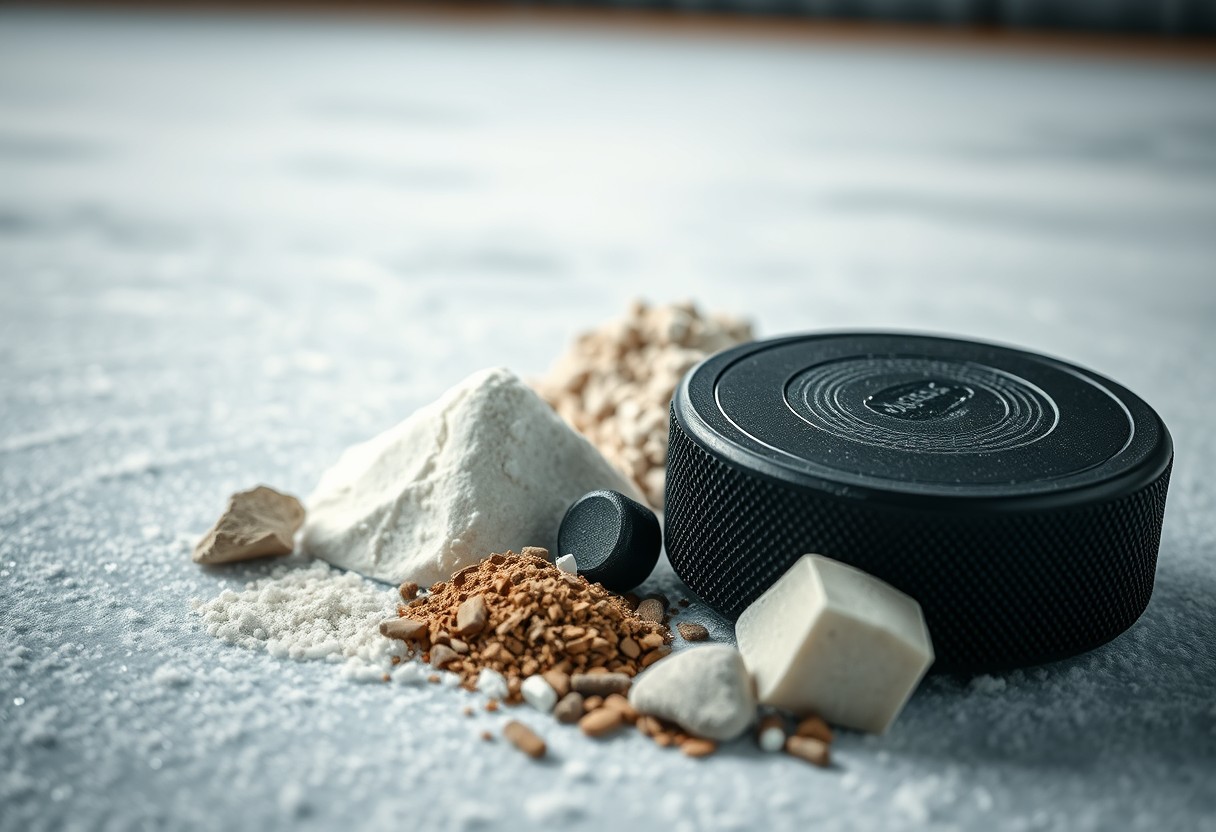
Performance Characteristics
All hockey pucks have specific performance characteristics that influence how they behave on the ice. Understanding these aspects can enhance your experience whether you are a player, coach, or fan.
Hardness and Resilience
With the right balance of hardness and resilience, hockey pucks are designed to maintain their shape and performance throughout the game. A standard puck typically has a durometer hardness rating around 85, which provides the necessary bounce and durability while minimizing damage from high-speed impacts.
Impact of Temperature
Impact on the performance of hockey pucks can significantly vary with temperature. When the temperature changes, the material properties of the puck can alter, affecting its hardness and resilience. Understanding this can help you choose the right puck for different playing conditions.
Impact of Temperature
| Temperature Range | Effect on Puck Performance |
|---|---|
| Below 0°C (32°F) | Increased hardness, leading to reduced bounce and potential for cracking. |
| 0°C to 10°C (32°F to 50°F) | Optimal range for standard play, providing good balance of hardness and resilience. |
| Above 10°C (50°F) | Decreased hardness, resulting in softer pucks that may deform more easily. |
Temperature plays a critical role in how your puck performs during a game. When it’s colder, pucks become harder and less forgiving, which might lead to more rebounds and less control. On warmer days, however, you might find your puck is softer and more prone to damage, impacting your play. Being aware of these temperature effects can enhance your strategy when selecting pucks for practice or games.
Temperature Effects on Pucks
| Temperature | Recommended Action |
|---|---|
| Below Freezing | Consider using special cold weather pucks with better resilience. |
| Moderate Conditions | Standard pucks will perform best, maintaining optimal conditions for gameplay. |
| Hot Weather | Monitor your puck’s condition; heavier use may lead to deformation. |
Environmental Considerations
After understanding the components of hockey pucks, it’s necessary to consider their environmental impact, particularly regarding sustainability and disposal. As we become more conscious of our ecological footprint, exploring the materials used in hockey pucks and their end-of-life options is crucial for environmentally responsible practices.
Sustainability of Materials
To assess the sustainability of hockey pucks, it’s important to note that traditional pucks are primarily made from vulcanized rubber, a durable yet non-biodegradable material. However, some manufacturers are exploring more sustainable options, such as using recycled rubber or alternative substances that minimize environmental impact while maintaining performance.
Disposal and Recycling
Any hockey player or fan should be aware of how to properly dispose of used pucks. Many ice rinks have specific disposal programs, and some manufacturers have begun implementing recycling initiatives to repurpose old pucks.
Considerations for recycling hockey pucks include checking local recycling guidelines and evaluating opportunities provided by ice hockey associations or clubs. Through these initiatives, you can ensure that your used pucks do not end up in landfills, contributing to a sustainable environment while supporting the growing trend of eco-conscious sports practices. Engaging in responsible disposal and recycling not only benefits the planet but also sets a positive example for future generations of hockey enthusiasts.
To wrap up
On the whole, understanding what hockey pucks are made of enhances your appreciation for the game. Traditionally crafted from 100% vulcanized rubber, these pucks are engineered for durability and optimal performance on the ice. As you engage with the sport, knowing the material composition helps you understand their behavior, speed, and resilience during play. Whether you’re a player or a fan, this knowledge enriches your experience and connection to the thrilling world of hockey.

